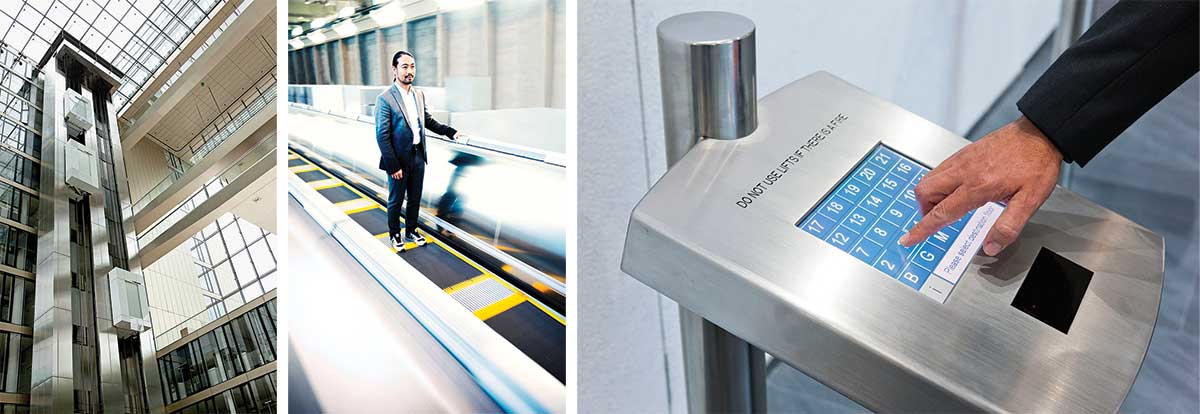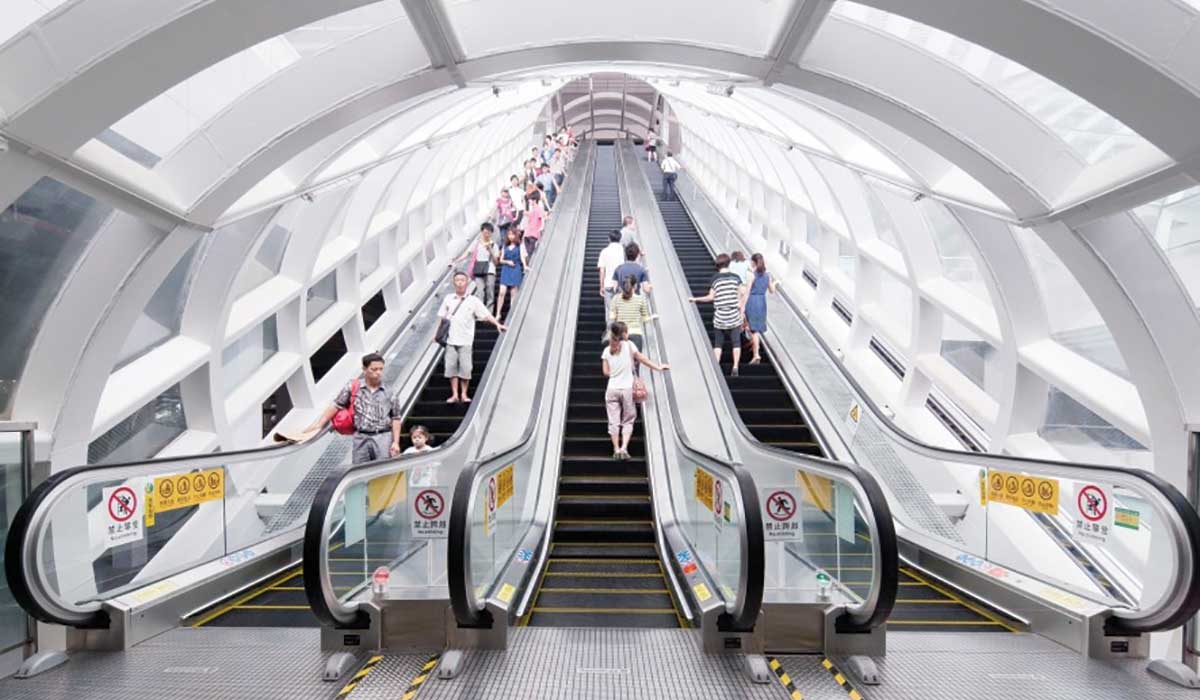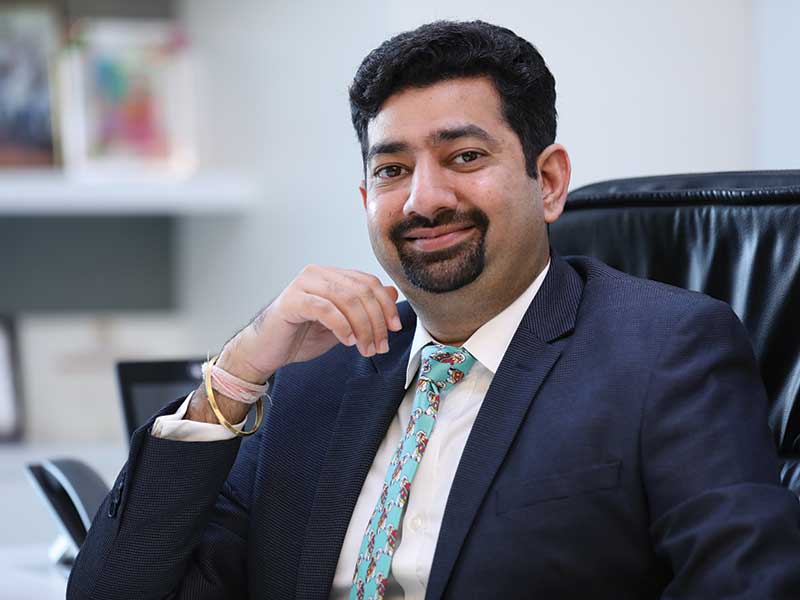Manish Mehan, CEO & MD, TK Elevator India
Elevator No Longer a Luxury but a Necessity
There is a growing need for developers, architects, and elevator suppliers/manufacturers to focus on the critical aspects of design, installation, and maintenance of elevators. We have noticed that in our country, elevators are not given their due importance, which leads to deployment of unsafe and inefficient elevators and their poor maintenance. The low rise, low-end segment is the biggest sufferer of this mentality.
Rapid and safe transport of people in growing urban structures is one of the great challenges of the future. Hence, convenient and time-efficient transport cannot be achieved without intelligent elevators, travellators, and escalators.

Challenges & Opportunities
A well-engineered design will take into consideration occupancy level of the building, elevator cabin capacity, factor in waiting times, cost-effectiveness, energy consumption, and consider ways to optimize space in the building. It is the improvements in elevator safety, comfort, speed, quality, space efficiency, and performance that have become challenges as well as opportunities in vertical transportation. There should be safer and faster solutions for access and destination control, information communication, and equipment monitoring.
While many commercial and retail establishments already have high-speed technologically advanced lifts, their usage in residential projects is a relatively recent phenomenon. Given that the elevator core forms the building’s load-bearing structure, and that such factors are determined early in the design process, the right choices have to be made the first time around. There are few opportunities to correct mistakes later. Hence the need for logistical and elevator planning insight, extensive expertise and experience, and the application of correct safety margins.
Timely Maintenance and Upkeep Solutions
Our aim is to have zero accidents in the field as well as in our manufacturing processes. All our employees are trained on safety parameters and safety drills are conducted at customer sites to sensitize and educate them on safety measures. Plus, our products have a host of built-in safety features. Having said that, we have high safety guidelines in all steps of the value chain, including R&D, operation, manufacturing, and installation, and we adhere to all the required set of compliances.
Builders, architects and elevator manufacturers need to work together to develop vertical transportation systems that are attuned with the building design, are operationally safe and efficient
We have also digitised our after-sales service business, with each of our technicians being connected to the office by smart tablets that enable them to service the elevators and escalators with greater efficiency, better response time, and thus have minimum MTBF (mean time before failure). With the help of smart tablets, they can access routes, manuals, technical data banks, and get expert advice from remote locations.
We have rolled out ‘Predictive Maintenance’ for some of our major customers by which means the critical parts / components of the elevator / escalator are directly replaced from the units on attaining its life period, irrespective of its malfunctioning or proper functioning. We have extended a special service to our major projects by which the customer has direct access to the health status of their equipment with real time technical information by logging on our website portal. We have also launched a mobile app that provides customers with their complaint status and closure update.
Last but not the least, is our MAX - a smart, machine learning IoT solution that increases elevator availability by reducing out-of-service situations through real-time diagnostics; predicts maintenance issues before they occur; and empowers elevator engineers by flagging the need to replace components and systems before the end of their lifecycle. Sensors transmit maintenance data like acceleration, vibration, acoustics, and frequency. Software in the elevators uses sensor data to flag immediate breakdowns, while the company’s cloud uses artificial intelligence to predict problems like broken doors.

Safety Codes & Quality Standards
One of the most pressing issues is regulating the discrepancies across the country. Each state has a different agency regulating the segment. A national-level body for regulation and policy is needed. Almost two-thirds of the country is still not covered with any legislation governing the installation and maintenance of lifts. The industry players say that a uniform Lift Act can not only help in improving product safety by using new technologies but also support in optimizing development, manufacturing, and installation.
We also believe that having a well-trained and experienced execution team on the project site, with whom the customers can collaborate and jointly take quick decisions, ensures a project well implemented and delivered, and within the agreed cost, time, resources, and quality.
Our focus is on offering better engineered and reliable elevators at optimal price levels, with shorter delivery cycles, as well as easy adaptability and interface to future design changes.
Enhancing Passenger Experience
The company has pioneered a significant advancement in elevator technology by introducing the following:
- MULTI - the world’s first rope-free elevator that moves multiple cars in a single shaft vertically and horizontally and reduces elevators’ footprint by up to 50% while increasing passenger throughput. With its rope-free system, architects and developers are no longer restricted in their designs by concerns about elevator shaft height and vertical alignment as MULTI opens the door to design possibilities in all directions.
- The TWIN elevator system consists of two cabs that operate in the same shaft, independent of each other. Both cabs operate under the same intelligent group control system and are equipped with an innovative quadruple redundancy safety system. It uses less energy while transporting up to 40% more passengers than conventional elevators.
- ACCEL is a unique transportation system that offers high capacities and high speeds for short distances, with no waiting time for passengers, and low implementation costs. Passengers step onto the ACCEL at normal walking speeds, accelerate smoothly up to 7.2 km/h, or even 12 km/h for passengers who continue walking on the pallet band, and then decelerate to normal speed when leaving the system. The system generates time savings of 70%.
The continuous development of new metro projects, airports, and smart cities has increased the demand for elevators and escalators. As air traffic and passenger volumes increase, reliable elevators are more important than ever to ensure efficient and stress-free airport mobility for travellers.
Our Tugela and Victoria are powerhouse escalators, specially developed to cater to heavy-duty traffic at airports, and also offer trend-setting designs for stylish airport interiors. Our moving walks give convenience, comfort and safety to users whether pushing a stroller or carting luggage, and significantly shorten the time it takes to cover long stretches in airports. They also optimize capacity and valuable space in airports. Our accelerated, next generation moving walk ACCEL is as mentioned before.
A central feature of modern airports, boarding bridges are also a passenger’s first and last point of airport contact. Our project-tailored passenger boarding bridges boost boarding efficiency, convenience, and safety. Our portfolio includes solutions from the largest commercial aircraft to propeller and regional jets. We customize each bridge to fit the airport’s unique environment. For smaller airports, a special ‘low rider’ solution lets passengers board directly from the ground-level terminal. At A380 gates, our flexible bridges service both decks of the airliner as well as a whole range of other aircraft. We have installed A380 bridges at over 40 airports worldwide.
Our advanced docking guidance system A-VDGS provides an integral solution for safe, smooth and efficient arrivals and departures. Some of its key features are long-range azimuth guidance right from the taxiway, operating range of more than 200 meters, and automatic activation.
At airports such as Milan’s Linate Airport, our easy-to-use platform lifts provide people with limited mobility independent access within the airport.
















